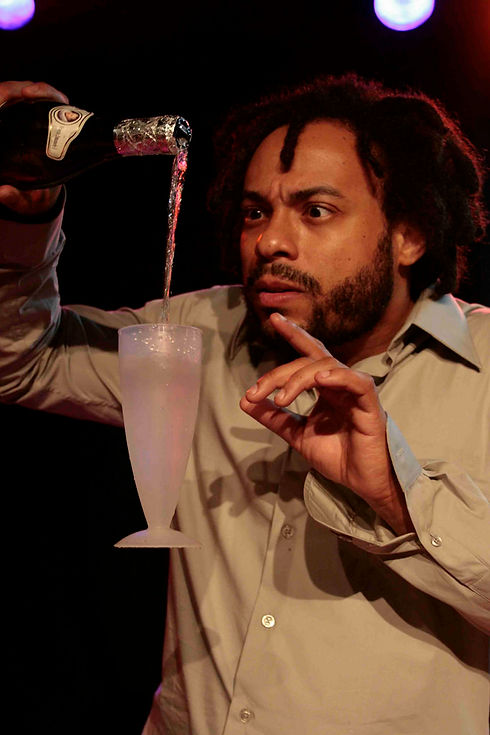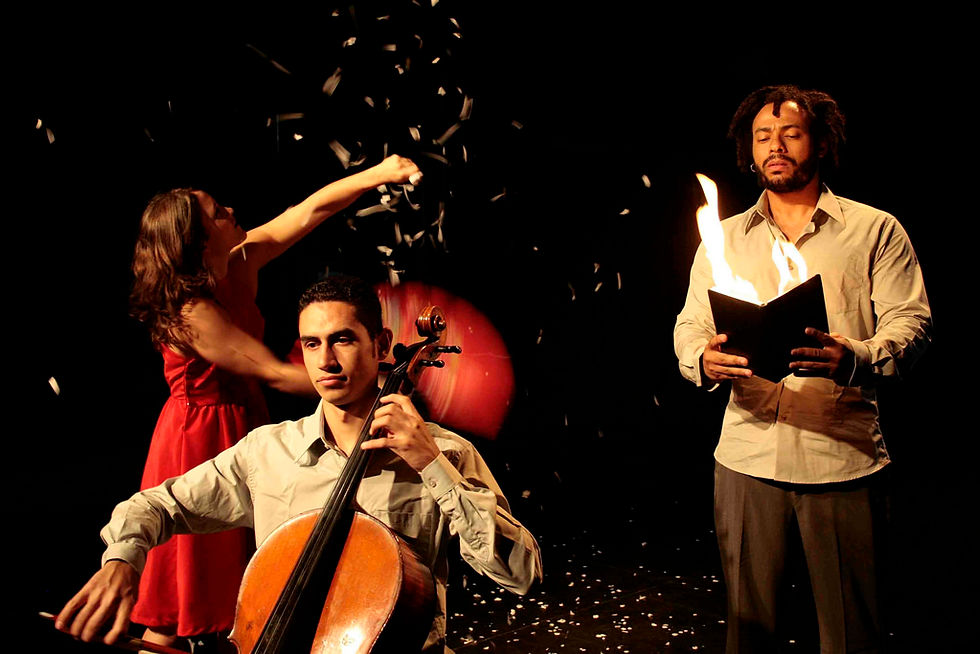
The Liar
This project is a result of a partnership between PERFORMA and Cia da Ilusão.
A man tries to deal with his solitude producing fantasies which turn banal and daily actions and chores into unique events. A rupture in this process comes out thanks to a woman who appears unexpectedly. Permeated by a growing tension between reality and fiction, the truth and the false, this encounter will reveal dangerous discoveries and turning points.
Interview with director Matteo Bonfitto:
1. Could you describe ‘The Liar’?
This productions intends to provoke a reflection on the tensions between the truth and the false which can occur on different levels. In this way, a variety of aspects are focused on, from ethics, politics and religion to love and self-knowledge. Ilusionism, thus, plays a significant role in this case, since it can make us perceive such tensions in a more perceptible way.
2. How was the process of re-significaction of classical illusionistic effects?
Before answering that, it is important to point out that illusionism has always fascinated me, mainly because it challenges our perception, what we think we know. When we start working, together with Ismael de Araújo, these potentialities were the source that allows our search for re-signification, as you put it. I think that in order to produce new perceptions of something it is necessary to be at the same time close to it and far from it. that’s what happened in this case.
3. What about the use of the text by Jean Cocteau? How was it?
We started exploring his text, but in the course of the rehearsals we perceived that it was necessary to amplify the horizon of the character. In Cocteau’s text, the questions he raises are restricted to his obsession with true and false. In our version we inserted another character, a woman - real or imaginary? - who makes him explore different facets not revealed in the original text. However, the stimuli produced by Cocteau’s text remain as aspects that permeate the inner universe of the character, manily in the moments in which he loses control and becomes more fragile. Besides the collaboration with Bianca Zanatta, who wrote the adaptation, the collaboration with Ismael and Fernanda Belinatti was crucial. It was a real teamwork.
4. Why the choice of discussing the true and the false?
First of all because is a deep human aspect, which goes beyond social classes and cultures. It is a discussion therefore that can produce a significant resonance. To consider something as true or false is a process that cannot be dissociated with perception, with your personal point of view. Besides, I think that this discussion is necessary at this moment in Brazil, not only due to political scandals, but also due to the process of naturalization of many contradictions.
5. Could you describe your work as a director in this production?
Despite the use of illusionistic equipments I tried to stage a minimalistic production, clean. The space suggests at the same time the interior of an apartment and a sort of subjective space, and in this way where the imagination of the spectator can fill in the space in between the real and the abstract.
6. What about music. What’s the role of music in this production?
Music here does not fulfill a decorative function. In many moments it is supposed to materialize the character’s inner processes. In a similar way, the cello player who will stay at the corner, almost offstage, will not be a musician, but it will be a sortt of mirror of the male character. So, we tried here to experiment a fusion between theatre, music and illusionism.
7. Illusionism has been unmasked in a certain way?
Yes, but in order to amplify its expressive and artistic potentialities. Instead of a demonstration of skills, we can perceive that illusionism can become a powerful metaphor.
Cast: Fernanda Belinatti, Ismael de Araújo, e Matteo Bonfitto (0ff Fish)
Text: Bianca Zanatta, inspired by the homonymous text by Jean Cocteau
Cello Player: Boaz de Oliveira
Lighting Designer: Beto Christo
Physical Training and Choreography: Gisela Dória
Directed by Matteo Bonfitto



View and/or Download the Clipping and Light Rider file from the Show


